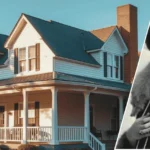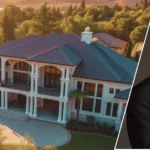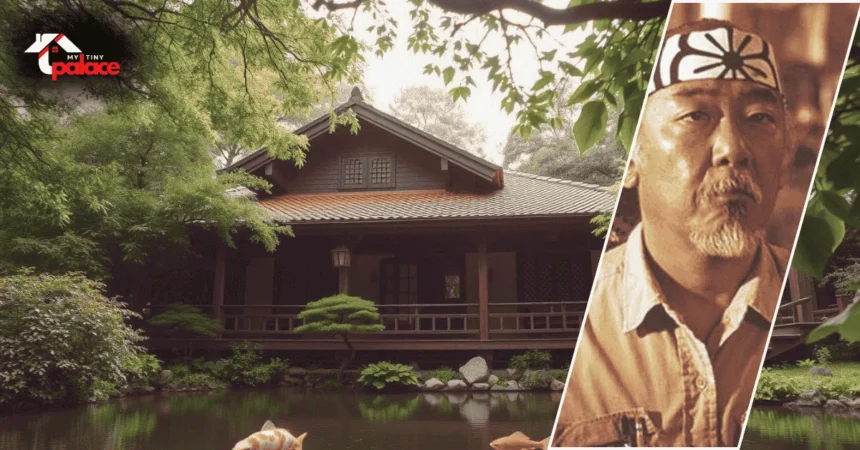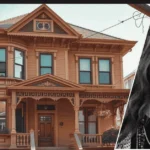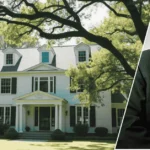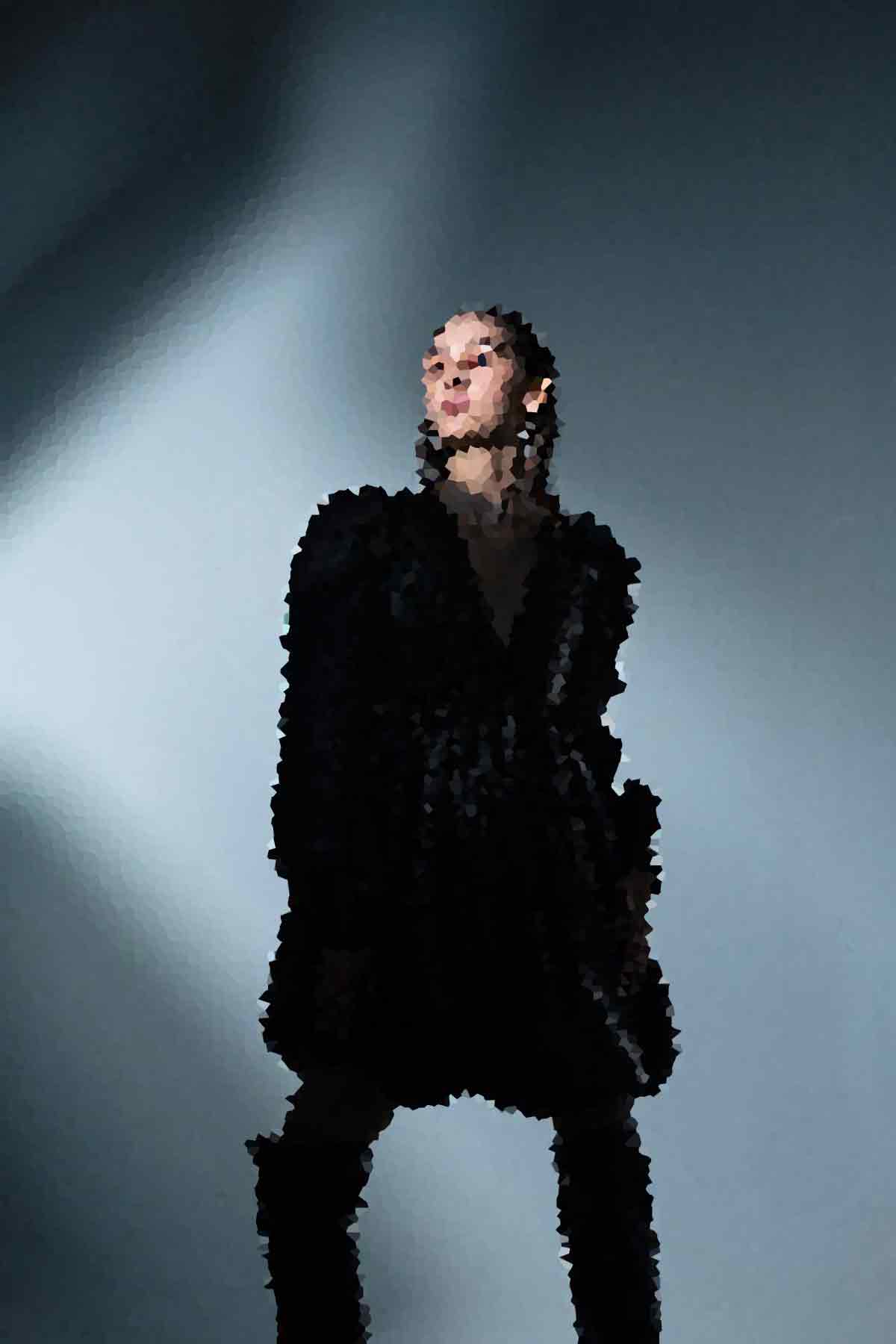The iconic residence of Mr. Miyagi, played by Pat Morita, in ‘The Karate Kid’ has become an integral part of pop culture history, often referenced in discussions about the original house that inspired many. Located at 20924 Gault Street in Canoga Park, this unassuming house was the backdrop for many pivotal scenes in the film, making it a notable site in Hollywood history.
- The Cultural Impact of ‘The Karate Kid’ and Its Iconic Settings
- Exploring Mr. Miyagi’s House: The Heart of Miyagi-Do Karate
- The Real Location of Mr. Miyagi’s House
- Distinctive Features That Made Mr. Miyagi’s House Memorable
- Tracking Down the History of the Property
- The Legacy and Influence of Mr. Miyagi’s House in Cobra Kai
- Conclusion: Why Mr. Miyagi’s House Remains an Enduring Symbol
The house, with its humble exterior, belied the significance of the events that unfolded within and around it, playing a crucial role in the story of Daniel LaRusso’s journey to mastering Miyagi-Do Karate.
This introduction sets the stage for a deeper dive into the cultural impact, features, and history of Mr. Miyagi’s house, a beloved filming location that continues to captivate fans of ‘The Karate Kid’ and ‘Cobra Kai.’
The Cultural Impact of ‘The Karate Kid’ and Its Iconic Settings
Since its release, The Karate Kid has been more than just a movie; it’s a cultural touchstone. The film’s blend of karate and coming-of-age themes resonated with audiences worldwide, making it a staple of 80s pop culture. The iconic settings, particularly Mr. Miyagi’s house, played a significant role in shaping the narrative and characters, contributing to the film’s enduring influence and making it a source of inspiration for martial artists everywhere.
The Karate Kid’s cultural impact is evident in its continued relevance, with the film inspiring new generations through its themes of perseverance and mentorship. The revival of the franchise through Cobra Kai has further cemented its place in contemporary pop culture, introducing the iconic settings, including Mr. Miyagi’s house, to a new audience.
The film’s influence extends beyond the screen, with Miyagi-Do Karate becoming synonymous with the values of discipline and respect. As a cultural phenomenon, The Karate Kid continues to be celebrated for its contribution to the world of martial arts films and its lasting impact on popular culture, particularly in the Reseda area where it was filmed.
Exploring Mr. Miyagi’s House: The Heart of Miyagi-Do Karate
At the core of ‘The Karate Kid’ lies Mr. Miyagi’s house, a serene oasis that embodies the principles of Miyagi-Do Karate. This iconic setting, portrayed by Pat Morita’s character, Mr. Miyagi, is where the essence of the martial art is taught to Daniel LaRusso, played by Ralph Macchio.
The house, with its beautifully maintained garden and koi pond, served as the backdrop for Daniel’s unconventional training. Mr. Miyagi used everyday tasks such as waxing cars, sanding floors, and painting fences to teach Daniel the fundamentals of karate. These training sequences were pivotal in Daniel’s development as a martial artist.
Mentor Moments
Beyond the training, Mr. Miyagi’s house was a place of significant mentor moments between Mr. Miyagi and Daniel. The tranquil atmosphere facilitated deep conversations and bonding between the two characters, strengthening their relationship and Daniel’s resolve to master Miyagi-Do Karate.
Mr. Miyagi’s house is not just a location in ‘The Karate Kid’; it’s a symbol of the mentorship and discipline that define Miyagi-Do Karate. The film’s use of this setting underscores the importance of environment in character development and the learning process.
The Real Location of Mr. Miyagi’s House
The authentic Mr. Miyagi’s house, situated at 20924 Gault Street, Canoga Park, has garnered significant attention from fans and film historians alike. Located in Los Angeles, this house was the pivotal setting for many scenes in “The Karate Kid,” showcasing Mr. Miyagi’s serene and humble abode.
During the filming of “The Karate Kid,” the production team chose this location for its tranquil and picturesque surroundings, which perfectly encapsulated the character of Mr. Miyagi. The house, with its distinctive architecture, became an integral part of the film’s narrative, symbolizing the wisdom and peace that Mr. Miyagi embodied.
Visitors and fans have been drawn to this location, eager to catch a glimpse of the iconic house. Although the interior scenes were filmed on a soundstage, the exterior of the house at 20924 Gault Street remains a significant pilgrimage site for enthusiasts of the franchise.
Over the years, the house has maintained its charm, continuing to attract visitors from around the world who seek to connect with this piece of cinematic history in real life. It stands as a testament to the enduring legacy of “The Karate Kid” and the impact of Mr. Miyagi’s character on popular culture.
Distinctive Features That Made Mr. Miyagi’s House Memorable
The serene atmosphere of Mr. Miyagi’s house is a result of its carefully designed features, including a koi pond and bonsai collection. These elements not only add to the aesthetic appeal of the house but also reflect Mr. Miyagi’s Japanese heritage and his approach to karate.
Koi Pond and Deck
The koi pond, surrounded by a beautifully landscaped garden, is a central feature of Mr. Miyagi’s house. It serves as a peaceful spot where Mr. Miyagi can meditate and connect with nature. The deck, often seen in the film, provides a perfect viewing area for the pond and is where Mr. Miyagi shares moments with Daniel-san, teaching him valuable life lessons.
The combination of the koi pond and deck creates a serene ambiance that is quintessential to the ‘Karate Kid’ movie experience, reminiscent of a peaceful backyard retreat. These features are not just decorative; they play a significant role in the narrative, symbolizing balance, harmony, and the connection between nature and the characters’ inner journeys, much like the serene environment of a backyard dojo.
Bonsai Collection
Mr. Miyagi’s bonsai collection is another distinctive feature of his house, showcasing his patience, discipline, and attention to detail. The bonsai trees are a metaphor for the karate philosophy, emphasizing the importance of control, nurturing, and growth. Through his care of the bonsai trees, Mr. Miyagi teaches Daniel-san about the value of dedication and the harmony between nature and martial arts.
The inclusion of these oriental accoutrements in Mr. Miyagi’s house not only adds to its cultural authenticity but also underscores the film’s themes of discipline, respect, and self-control, similar to the principles taught in a dojo. The house, with its landscaped garden and serene features, remains an iconic setting in ‘The Karate Kid,’ symbolizing the wisdom and tranquility that Mr. Miyagi embodies.
Tracking Down the History of the Property
The history of 20924 Gault Street, Canoga Park, is a captivating tale of transformation, from its early days to its current status as a cultural icon. This property, famously known as Mr. Miyagi’s house in ‘The Karate Kid,’ has a rich history that predates its fame.
Historic aerial photographs and records provide valuable insights into the property’s past, showcasing its original state and the changes it underwent over the years. These visual confirmations are crucial in verifying the property’s transformation, from its initial construction to its current state.
The property’s use as a filming location for ‘The Karate Kid’ marked a significant point in its history, turning it into a beloved landmark for fans of the film. Efforts to preserve such iconic sites are ongoing, with fans and preservationists working together to maintain the integrity of these cultural touchstones.
Understanding the history of 20924 Gault Street not only sheds light on the property itself but also on the broader cultural impact of ‘The Karate Kid,’ which has become a source of nostalgia for fans worldwide. As a filming location, it played a pivotal role in the narrative of the film, becoming an integral part of the movie’s enduring legacy.
The Legacy and Influence of Mr. Miyagi’s House in Cobra Kai
The influence of Mr. Miyagi’s house is evident throughout Cobra Kai, bridging the gap between the old and the new. As the sequel series continues the Karate Kid saga, the house remains a significant element, symbolizing the enduring themes of mentorship and perseverance that defined the original film.
In Cobra Kai, the legacy of Mr. Miyagi’s house is revisited through the characters’ interactions and flashbacks, serving as a nostalgic reminder of the lessons Daniel LaRusso learned from Mr. Miyagi. The house is more than just a physical location; it represents the values and principles that Mr. Miyagi instilled in Daniel, which continue to guide him in the present and resonate with the teachings found in a dojo.
The continued reference to Mr. Miyagi’s house in Cobra Kai highlights the lasting impact of the original Karate Kid movie on popular culture. It also underscores the significance of Miyagi-Do Karate, the martial art philosophy that Mr. Miyagi taught Daniel, which remains a central theme in the series and serves as a source of inspiration for many practitioners in real life.
By incorporating Mr. Miyagi’s house into its narrative, Cobra Kai pays homage to the roots of the Karate Kid franchise while introducing these beloved characters and themes to a new generation. The house stands as a testament to the timeless appeal of the Karate Kid story, as seen through the lens of characters like Ralph Macchio and the late Pat Morita.
Conclusion: Why Mr. Miyagi’s House Remains an Enduring Symbol
Mr. Miyagi’s house has become an integral part of the ‘The Karate Kid’ franchise’s identity, symbolizing the wisdom and mentorship that Mr. Miyagi imparted to Daniel LaRusso, played by Ralph Macchio, making it a cherished original house in the hearts of fans. The house’s cultural impact is undeniable, having been featured prominently in the film and subsequent series, including ‘Cobra Kai.’
The legacy of Mr. Miyagi’s house continues to captivate audiences, serving as a tangible connection to the movie’s themes and characters. Pat Morita’s portrayal of Mr. Miyagi remains iconic, and the house is a lasting reminder of his character’s influence on the franchise, solidifying its place in Hollywood lore.
As a cultural touchstone, Mr. Miyagi’s house has endured long after the film’s release, inspiring new generations of fans. Its significance extends beyond the screen, representing a nostalgic era and a symbol of the values embodied by Mr. Miyagi.
The continued relevance of Mr. Miyagi’s house is a testament to the lasting impact of ‘The Karate Kid’ on popular culture, ensuring its place in the hearts of fans and its continued appearance in ‘Cobra Kai.’

